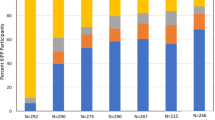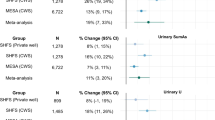Abstract
Balkan endemic nephropathy (BEN) is a kidney disease that has been reported in only certain rural villages in Serbia, Bulgaria, Romania, Croatia and Bosnia. The cause of BEN remains a mystery, but researchers seem to agree that exposure to one or more environmental agents is at least partially responsible. The Pliocene lignite hypothesis suggests the disease is due to long-term exposure to polycyclic aromatic hydrocarbons (PAHs) or other toxic organic compounds that have leached into drinking water supplies from low-rank coals. Although this hypothesis has been promoted by some researchers, efforts to substantiate it have been inconclusive due to limitations in sample size and methodology. The present study was designed to further examine this hypothesis by analyzing PAHs, which were implicated in the original hypothesis, in a larger number of water samples from endemic and nonendemic villages in Bulgaria and for other chemical differences between the villages. Results show that levels of all PAHs were low, with none exceeding the drinking water standard for benzo-[a]-pyrene, the most toxic PAH, and the only one for which a maximum contaminant level (MCL) has been set for drinking water. Comparison of additional unidentified chromatographic peaks from high-pressure liquid chromatography (HPLC) technique designed to detect dissolved organic compounds (DOCs) that leach from coal failed to show higher levels in BEN villages. This study finds no basis to connect PAHs or other unknown DOCs to the etiology of BEN, and suggests that the evidence in support of the Pliocene lignite hypothesis is limited to the spatial association originally proposed.
This is a preview of subscription content, access via your institution
Access options
Subscribe to this journal
Receive 6 print issues and online access
$259.00 per year
only $43.17 per issue
Buy this article
- Purchase on Springer Link
- Instant access to full article PDF
Prices may be subject to local taxes which are calculated during checkout




Similar content being viewed by others
References
Agency for Toxic Substances and Disease Registry (ATSDR). Toxicological profile for polycyclic aromatic hydrocarbons (PAHs). US Department of Health and Human Services, Public Health Service, Atlanta, GA, 1995.
Alpendurada M.F. Polycyclic Aromatic Hydrocarbonds: contribution to the study of water supplies in Oporto District. In: Agneletti G., Bjorseth A. (Eds.). Proceedings of the 6th European Symposium ‘Organic Micropollutants in the Aquatic Environment. Kluwer Academic Publishers, Lisbon, Portugal, 1991, pp 366–370.
Baker A., and Lamont-Black J. Fluorescence of dissolved organic matter as a natural tracer of ground water. Ground Water 2001: 39: 745–750.
Budde W.L. Analytical Mass Spectrometry: Strategies for Environmental and Related Applications. American Chemical Society, Washington, DC, 2001.
Chernozemsky I.N., Stoyanov I.S., and Petkovabocharova T.K., et al. Geographic correlation between occurrence of endemic nephropathy and urinary-tract tumors in Vratza district, Bulgaria. Int J Cancer 1977: 19: 1–11.
Clarke J.U. . Evaluation of censored data methods to allow statistical comparisons among very small samples with below detection limit observations. Environ Sci Technol 1998: 32: 117–183.
Cohn P.D., Cox M., and Berger P.S. Health and aesthetic aspects of water quality. In: Letterman R.D. (Ed.). Water Quality and Treatment. McGraw-Hill, Inc., New York, NY, 1999.
Cosyns J.P., Jadoul M., and Squifflet J.P. Chinese herbs nephropathy: a clue to Balkan endemic nephropathy? Kidney Int 1994: 45: 1680–1688.
Davidson R.M. Molecular Structure of Coal. IEA Coal Research, London, 1980.
Dimitrov M. . Medizina I. Fizkultura (in Bulgarian). In: Puchlev A. (Ed.). Endemic Nephritis in Bulgaria. Sofia, 1960, pp 201–207.
Dimitrov P.S., Simeonov V.A., and Stein A.D. Balkan endemic nephropathy in Vratza, Bulgaria, 1964–1987: an epidemiologic analysis of population-based disease registers. Am J Epidemiol 2001: 17: 847–853.
Dimitrov P.S., Simeonov V.A., Ganev V.S., and Karmaus W.J.J. Is the incidence of Balkan endemic nephropathy decreasing? Pathol Biol 2002: 50: 38–41.
Feder G.L., Radovanovic Z., and Finkelman R.B. Relationship between weathered coal deposits and the etiology of Balkan endemic nephropathy. Kidney Int 1991: 40: S9–S11.
Ganev V.S., and Petropoulos E.A. Balkan endemic nephropathy and its putative environmental and genetic causes: a review. In: Lekkas T. (Ed.). The 6th International Conference on Environmental Science and Technology. University of the Aegean, Pythagorion, Samos, Greece, 1999, pp 11–21.
Goldberg M., Feder G.L., and Radovanovic Z. Correlation of Balkan endemic nephropathy with fluorescent organic compounds in shallow groundwater. Appl Hydrogeol 1994: 2: 15–22.
Hoops H., and Feder G. Chemical qualities of water that contribute to human health in a positive way. Sci Total Environ 1986: 54: 207–216.
Hranjec T., Kovac A., and Kos J., et al. Endemic nephropathy: the case for chronic poisoning by Aristolochia. Croat Med J 2005: 46: 116–125.
Kraus K. Studien ueber die endemische nephrozirrhose der Balkanhabinsel. Zeitschr Fur Arzliche Fortbildung 1996: 60: 829–834.
Kveseth K., and Sortland B. Polycyclic aromatic-hydrocarbons in sewage, mussels and tap water. Chemosphere 1982: 11: 623–639.
Long D.T., Icopini G., and Ganev V., et al. Geochemistry of Bulgaria soils in villages affected and not affected by Balkan endemic nephropathy: a pilot study. Int J Occup Med Environ Health 2001a: 14: 193–196.
Long D.T., Icopini G., Ganev V., Petropoulos E.A., Voice T.C., and Chou K. Fingerprinting Balkan endemic nephropathy in the Bulgarian environment with geochemical markers. In: Lekkas T. (Ed.). Preceedings of the 7th International Conference on Environmental Science and Technology-September 2001. University of the Aegean Press, Mytilene, Greece, Syros, Greece, 2001b, pp 541–546.
Maksimovic Z. Etiology of endemic (Balkan) nephropathy. In: Strahinjic S, Stefanovic V. (Eds.). Proceediongs of the 6th Symposium on Endemic (Balkan) Nephropathy. University Press, Nis, 1987, pp 43–47.
Manoli E., and Samara C. Polycyclic aromatic hydrocarbons in natural waters: sources, occurrence and analysis. Trends Anal Chem 1999: 18: 417–428.
McElmurry S.P., and Voice T.C. Screening methodology for coal-derived organic contaminants in water. Int J Environ Anal Chem 2004: 84: 277–287.
Milman B.L. . Identification of chemical compounds. Trac-Trends Anal Chem 2005: 24: 493–508.
Nelson C.R. Chemistry of Coal Weathering. Elsevier, New York, 1989.
Niagolova N., McElmurry S.P., and Voice T.C., et al. Nitrogen species in drinking water indicate potential exposure pathway for Balkan endemic nephropathy. Arch Environ Contam Toxicol 2005: 134: 229–237.
Orem W.H., Feder G.L., and Finkelman R.B. A possible link between Balkan endemic nephropathy and the leaching of toxic organic compounds from pliocene lignite by groundwater: preliminary investigation. Int J Coal Geol 1999: 40: 237–252.
Orem W.H., Tatu C.A., and Feder G.L., et al. Environment, geochemistry and the etiology of Balkan endemic nephropathy: lessons from Romania. Facta Universitatis, Series: Med Biol 2002: 9: 39–48.
Orem W.H., Tatu C.A., and Lerch H.E., et al. Identification and environmental signifcance of the organic compounds in water supplies associated with a Balkan endemic nephropathy region in Romania. J Environ Health Res 2004: 3: 49–61.
Pfohl-Leszkowicz A., Petkova-Bocharova T., Chernozemsky I.N., and Castegrano M. Balkan endemic nephropathy and associated urinary tract tumours: a review on aetiological causes and the potential role of mycotoxins. Food Additive Cont 2002: 19: 282–302.
Pichon V., Coumes C.C.D., Chen L., Guenu S., and Hennion M.C. Simple removal of humic and fulvic acid interferences using polymeric sorbents for the simultaneous solid-phase extraction of polar acidic, neutral and basic pesticides. J Chromatogr A 1996: 737: 25–33.
Polenakovic M.H., and Stefanovic V. Balkan Nephropathy. Davison A.M., et al. Oxford University Press, Oxford, 1997.
Puchlev A., Astrug A., Popov N., and Dotchev D. Clinical studies on endemic nephrities. In: Puchlev A. (Ed.). Endemic Nephritis in Bulgaria; Medizina I Fizkultura. Sofia, 1960, pp 7–71.
Puig D., and Barcelo D. Comparison of different sorbent materials for on-line liquid-solid extraction followed by liquid chromatographic determination of priority phenolic compounds in environmental waters. J Chromatogr A 1996: 733: 371–381.
Radovanovic Z., and Stefanovic D. Different forms of mineral nitrogen in drinking water and Balkan nephropathy. Arch Environ Contam Toxicol 1988: 17: 813–815.
Radovanovic Z. Epidemiological characteristics of balkan endemic nephropathy in eastern regions of Yugoslavia. IARC Sci Pub 1991: 115: 11–20.
Schwarzenbach R.P., Gschwend P.M., and Imboden D.M. Environmental Organic Chemsitry. John Wiley & Sons, New Jersey, 2003.
Senesi N. Nature of interactions between organic chemicals and dissolved humic substances and the influence of environmental factors. In: Beck A.J. et al. (Eds.). Organic Substances in Soil and Water: Natural Constituents and Their Influences on Contaminant Behavior. The Royal Society of Chemistry, Cambridge, 1993, pp 73–101.
Shiraishi H., Pilkington N.H., Otsuki A., and Fuwa K. Occurrence of chlorinated polynuclear aromatic hydrocarbons in tap water. Environ Sci Technol 1985: 19: 585–589.
Snyder L.R., and Kirkland J.J. Introduction to Modern Liquid Chromatography. Wiley, New York, 1979.
Stein S.E. Estimating probabilities of correct identification from results of mass spectral library searches. J Am Soc Mass Spectrom 1994: 5: 316–323.
Tanchev J. Medico-geographical map of the Balkan endemic nephropathy in the district of Vratza. Vutreshni Bolesti 1977: 16: 59–65.
Tanchev Y., Evstatiev Z., Dorossiev D., Pencheva J., and Tzvetkova G. Studies in the nephritides in the district of Vratza. Savremenna Med 1956: 7: 14–29.
Tatu C.A., Orem W.H., and Feder G.L., et al. additional support for the role of the pliocene lignite derived organic compounds in the etiology of Balkan endemic nephropathy. J Med Biochem 2000: 4: 95–101.
Tatu C.A., Orem W.H., Finkelman R.B., and Feder G.L. The etiology of Balkan endemic nephropathy: still more questions than answers. Environ Health Perspect 1998: 106: 689–700.
Wedeen R.P. Environmental renal-disease – lead, cadmium and Balkan endemic nephropathy. Kidney Int 1991: 40: S4–S8.
Acknowledgements
This study was supported by Grant 2 D43 TW00-641 from the Fogarty International Center, National Institutes of Health, USA, and by Grant SfP971905 from the North Atlantic Treaty Organization (NATO), both to the Institute of International Health at Michigan State University.
Author information
Authors and Affiliations
Corresponding author
Rights and permissions
About this article
Cite this article
Voice, T., McElmurry, S., Long, D. et al. Evaluation of the hypothesis that Balkan endemic nephropathy is caused by drinking water exposure to contaminants leaching from Pliocene coal deposits. J Expo Sci Environ Epidemiol 16, 515–524 (2006). https://doi.org/10.1038/sj.jes.7500489
Received:
Accepted:
Published:
Issue Date:
DOI: https://doi.org/10.1038/sj.jes.7500489
Keywords
This article is cited by
-
Balkan endemic nephropathy: an update on its aetiology
Archives of Toxicology (2016)
-
The effects of environmental chemicals on renal function
Nature Reviews Nephrology (2015)
-
Escalating chronic kidney diseases of multi-factorial origin in Sri Lanka: causes, solutions, and recommendations
Environmental Health and Preventive Medicine (2014)
-
Organic compounds in water extracts of coal: links to Balkan endemic nephropathy
Environmental Geochemistry and Health (2014)



